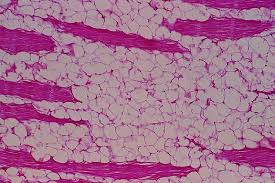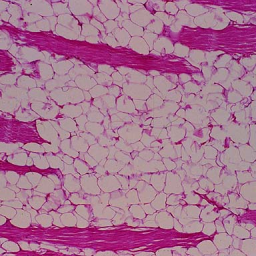
1. Genetics: A Key Factor in Lipoma Growth
The most significant factor influencing the development and growth of lipomas in the abdominal area is genetics. Research shows that individuals with a family history of lipomas are more likely to develop them. This genetic predisposition can be linked to certain inherited conditions that make some individuals more susceptible to developing multiple lipomas.
Familial Multiple Lipomatosis
Familial multiple lipomatosis is a genetic condition that leads to the development of numerous lipomas throughout the body, including the abdominal region. In people with this condition, lipomas can appear during early adulthood and tend to grow slowly over time. These individuals may develop lipomas in clusters, and some may experience significant growth of abdominal lipomas.
Although familial multiple lipomatosis is not typically associated with any other severe health complications, it can significantly affect a person’s quality of life due to the physical appearance of the growths and potential discomfort or pain, especially if the lipomas press against muscles or nerves.
Other Genetic Syndromes
Other genetic conditions can also increase the likelihood of developing abdominal lipomas. For example, Gardner’s syndrome and Cowden syndrome are associated with the growth of multiple lipomas, along with other benign and malignant tumors. People with these genetic disorders often need close monitoring by healthcare providers to manage their overall health.
2. Hormonal Factors and Their Role in Lipoma Growth
Hormones are another major factor that influences lipoma growth, particularly during periods of hormonal fluctuation such as adolescence, pregnancy, and menopause. Lipomas tend to grow more rapidly during these times, possibly due to hormonal changes that affect fat distribution in the body.
Hormonal Changes During Pregnancy

Pregnancy can lead to significant hormonal changes in the body, which may contribute to the growth of lipomas, particularly in the abdominal area. Some women report noticing a new lipoma or an increase in the size of existing lipomas during pregnancy. This growth is thought to be linked to elevated levels of hormones like progesterone and estrogen, which are involved in fat storage and redistribution.
While pregnancy-related lipoma growth is usually benign, it’s important to monitor any changes in size or characteristics of the lipoma, especially if they cause discomfort. In some cases, lipomas can cause pain if they press on surrounding tissues or organs.
Menopause and Hormonal Shifts
Similar to pregnancy, menopause is another period of significant hormonal change in a woman’s life. As estrogen levels decrease, the body’s fat distribution can change, which might lead to the formation or growth of lipomas. Some women notice that lipomas in the abdominal region grow larger during menopause, although these changes are generally not a cause for concern unless they lead to pain or discomfort.
3. Lifestyle Factors and Their Impact on Lipomas
While genetics and hormones play significant roles in the growth of abdominal lipomas, lifestyle factors can also contribute to the development and progression of these fatty tumors. Diet, exercise, and overall health can influence the formation of lipomas, though the evidence linking lifestyle choices directly to lipoma growth is not definitive.
Obesity and Lipoma Formation
Obesity is one of the lifestyle factors that has been linked to the formation of lipomas. Individuals who are overweight or obese tend to have higher levels of body fat, which may increase the likelihood of developing lipomas. Fat cells can accumulate in areas such as the abdomen, contributing to the growth of lipomas in the abdominal region. While excess fat may not directly cause lipomas, it may provide an environment conducive to their growth.
Poor Diet and Nutrient Imbalances
A poor diet that is high in processed foods, sugars, and unhealthy fats may contribute to the overall growth of fat cells in the body. While there is no direct evidence proving that a poor diet leads to lipomas, an unhealthy diet can contribute to obesity, which, as previously mentioned, is a known risk factor for lipoma development.
Physical Inactivity
Lack of exercise can lead to weight gain and an increase in body fat, particularly in the abdominal region. Individuals who lead sedentary lifestyles may be at a higher risk of developing lipomas. Regular physical activity can help maintain a healthy weight and reduce the likelihood of fat accumulation, which in turn may reduce the formation of lipomas.
4. Injury and Trauma to the Abdominal Area

While the precise mechanisms are not fully understood, some studies suggest that trauma or injury to the abdominal region could contribute to the development of lipomas. Physical trauma to the skin or underlying tissue may trigger an abnormal growth of fat cells, leading to the formation of a lipoma. This is more likely to occur if the fat cells in the affected area are damaged or disrupted by injury.
For example, an individual who experiences a deep bruise or laceration in the abdominal region may later notice the development of a lipoma at the site of the injury. While this link is still debated, some healthcare providers believe that injury may stimulate the growth of fatty tissue.
5. Abdominal Lipomas and Age: Do They Grow Faster with Age?
Age is another factor that can influence the growth of abdominal lipomas. Lipomas typically begin to form in early adulthood, usually between the ages of 40 and 60. While lipomas can develop at any age, they are more commonly diagnosed in middle-aged adults. As individuals age, their metabolism and fat distribution patterns change, which may contribute to the growth of existing lipomas or the formation of new ones.
Older Adults and Lipoma Growth
In older adults, lipomas can grow more slowly, but they may become more noticeable over time. These individuals may be more likely to develop multiple lipomas, particularly in the abdominal area. The skin’s elasticity decreases with age, and as lipomas grow, they can become more prominent beneath the skin, which may lead to cosmetic concerns or discomfort.
6. Health Conditions That May Influence Lipoma Growth
Certain underlying health conditions can also affect the growth of abdominal lipomas. For example, diabetes and hyperlipidemia (high cholesterol or triglycerides) may lead to an increased amount of fatty tissue in the body, which could contribute to the development of lipomas.
Diabetes and Lipomas
Individuals with diabetes are at a higher risk of developing lipomas. Diabetes is associated with higher levels of blood sugar and insulin, which can lead to the accumulation of fat cells. The body’s inability to properly regulate blood sugar levels can encourage fat storage, which may facilitate lipoma formation, particularly in the abdominal region.
Hyperlipidemia and Lipoma Growth
People with hyperlipidemia, a condition characterized by elevated levels of lipids (fats) in the blood, may also be more prone to developing lipomas. The excess fat in the bloodstream may contribute to the growth of fatty tissue under the skin, leading to lipoma formation.
7. Monitoring Lipomas in the Abdominal Region
Although most lipomas are harmless, monitoring their growth is important to ensure that they do not develop into a larger issue. If you notice changes in the size, shape, or appearance of a lipoma in your abdominal region, it’s important to seek medical advice. In rare cases, lipomas can become painful, interfere with organ function, or even turn into a more serious condition.
When to Seek Medical Attention
- Rapid Growth: If a lipoma grows quickly or becomes larger than usual, it may require medical evaluation to rule out other conditions.
- Pain or Discomfort: Lipomas that press against nerves or other structures may cause pain, especially in the abdominal area. If this occurs, you may need to consider removal options.
- Changes in Texture: If the lipoma becomes hard or unusually firm, or if the skin over the lipoma changes color, it could be a sign that further investigation is needed.
The growth of abdominal lipomas is influenced by various factors, including genetics, hormonal changes, lifestyle choices, trauma, age, and underlying health conditions. While most lipomas are benign and do not pose significant health risks, understanding the factors that contribute to their development can help in early detection and proper management. If you have concerns about a lipoma, especially if it causes discomfort or changes in appearance, it is crucial to consult with a healthcare professional to determine the best course of action.



